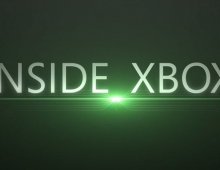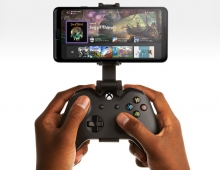
Microsoft Details Direct3D For Xbox One
Microsoft on Monday released some additional details on the version of Direct3D for Xbox One, and provided a summary of the state of Direct3D 11.2.
Windows 8.1 and Xbox One are coming soon and Microsoft has made advancements in Direct3D for game developers. With the launch of Xbox One, Microsoft is bringing the latest generation of Direct3D 11 to console. The Xbox One graphics API is "Direct3D 11.x" and the Xbox One hardware provides a superset of Direct3D 11.2 functionality. Microsoft also added that other graphics APIs such as OpenGL and AMD's Mantle would not be available on Xbox One.
Commenting on Mantle and Xbox One, AMD released a short statement through Twitter.
"Mantle is NOT in consoles. What Mantle creates for the PC is a development environment that's *similar* to the consoles, which already offer low-level APIs, close-to-metal programming, easier development and more (vs. the complicated PC environment). By creating a more console-like developer environment, Mantle: improves time to market; reduces development costs; and allows for considerably more efficient rendering, improving performance for gamers. The console connection is made because next-gen uses Radeon, so much of the programming they're doing for the consoles are already well-suited to a modern Radeon architecture on the desktop; that continuum is what allows Mantle to exist."
Developers creating content for the Xbox One are able to use the same programing constructs across Windows and Xbox. With Xbox One Microsoft has also made enhancements to the implementation of Direct3D 11, especially in the area of runtime overhead. The result is a streamlined, "close to metal" level of runtime performance. In conjunction with the third generation PIX performance tool for Xbox One, developers can use Direct3D 11 to unlock the full performance potential of the console.
Meanwhile Microsoft has also been at work delivering a number of advances to Direct3D 11 on Windows, including:
- The introduction of Tiled Resources, a new hardware feature for efficiently managing enormous volumes of data on the GPU more efficiently, enabling higher levels of detail as well as more open-world gameplay.
- Tools in Visual Studio for analyzing and debugging code built using Direct3D 11 - Improved performance when accessing memory shared between CPU and GPU when executing compute workloads.
- Programming model improvements, including advances in HLSL that enables developers to write more manageable shader code, and reduce runtime cycles spent on shader compilation.
- Improved performance and efficiency on mobile form factors by reducing presentation overhead and enabling hardware accelerated overlays & scalers. This enables better game performance on high-resolution displays, and improved rendering latency.
Commenting on Mantle and Xbox One, AMD released a short statement through Twitter.
"Mantle is NOT in consoles. What Mantle creates for the PC is a development environment that's *similar* to the consoles, which already offer low-level APIs, close-to-metal programming, easier development and more (vs. the complicated PC environment). By creating a more console-like developer environment, Mantle: improves time to market; reduces development costs; and allows for considerably more efficient rendering, improving performance for gamers. The console connection is made because next-gen uses Radeon, so much of the programming they're doing for the consoles are already well-suited to a modern Radeon architecture on the desktop; that continuum is what allows Mantle to exist."
Developers creating content for the Xbox One are able to use the same programing constructs across Windows and Xbox. With Xbox One Microsoft has also made enhancements to the implementation of Direct3D 11, especially in the area of runtime overhead. The result is a streamlined, "close to metal" level of runtime performance. In conjunction with the third generation PIX performance tool for Xbox One, developers can use Direct3D 11 to unlock the full performance potential of the console.
Meanwhile Microsoft has also been at work delivering a number of advances to Direct3D 11 on Windows, including:
- The introduction of Tiled Resources, a new hardware feature for efficiently managing enormous volumes of data on the GPU more efficiently, enabling higher levels of detail as well as more open-world gameplay.
- Tools in Visual Studio for analyzing and debugging code built using Direct3D 11 - Improved performance when accessing memory shared between CPU and GPU when executing compute workloads.
- Programming model improvements, including advances in HLSL that enables developers to write more manageable shader code, and reduce runtime cycles spent on shader compilation.
- Improved performance and efficiency on mobile form factors by reducing presentation overhead and enabling hardware accelerated overlays & scalers. This enables better game performance on high-resolution displays, and improved rendering latency.




















